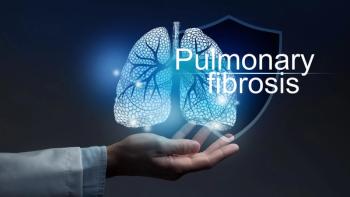
- Pharmaceutical Technology-02-02-2009
- Volume 33
- Issue 2
An Analytical Technique with Special Resonance
A new book inspires readers to seek ways to apply NMR spectroscopy to their own purposes.
Nuclear magnetic resonance (NMR) spectroscopy has been used as an analytical tool since the 1950s. It allows scientists to view single atoms and molecules in various media solutions and in the solid state, and this capability makes the technique an invaluable tool in pharmaceutical development. A new book titled NMR Spectroscopy in Pharmaceutical Analysis offers readers a comprehensive look at NMR spectroscopy and its use as a practical tool for the pharmaceutical industry. The book is divided into three parts that describe fundamentals and techniques, general applications, and special applications.
NMR Spectroscopy in Pharmaceutical Analysis, U. Holzgrabe, I. Wawer, and B. Diehl, Eds., Elsevier, Amsterdam, 2008, 528 pp., ISBN: 978-0-444-53173-5
The first chapter of Part I, "Fundamentals and Techniques," establishes the basis of understanding for the rest of the book. This chapter educates the reader about the various parameters used in high-resolution NMR spectroscopy to determine the unique structure of molecules. These parameters are described in topic-specific discussions that are enhanced with tables and figures to demonstrate the intricacies of this methodology.
The chapter is logically organized and includes sections discussing chemical shift, spin–spin coupling, heteronuclear spectra, molecular dynamics, chemical derivatization, and stereochemistry. These chapter sections are divided into specific topic discussions within the major category. For instance, Section 3 on chemical shift includes discussions of electronic density, anisotropy, mesomerism, and steric effects. The author analyzed the chemical rifamycin to generate the data presented in the sections, thus maintaining continuity.
The subsequent chapters in Part I build on the concepts presented in Chapter 1 and discuss quantitative NMR from the solution and solid-state perspectives. These chapters also discuss the applicability of microcoil NMR technology in today's analytical environment. The chapters are of particular interest to analysts because they discuss the applicability of NMR technology and the advantages it offers over current preferred methodology such as high-performance liquid chromatography (HPLC).
One author noted that the decisive advantage of NMR spectroscopy is that it requires almost no preparation time. Eliminating extensive preparation time would allow more samples to be analyzed in a shorter period of time. If adopted as a release procedure, NMR could help companies get close to attaining real-time release for their products.
Part II of the book, dedicated to general applications, comprises seven chapters that focus on NMR technology as a practical laboratory tool. Topics in this section include using NMR to analyze multicomponent drugs, determine polymer characterization, identify and characterize natural substances, and perform metabolic profiling.
One of the more interesting chapters in Part II is the chapter titled "Investigation of Multi-Component Drugs by NMR Spectroscopy" because it shows readers that NMR spectroscopy can be an efficient way to analyze complex drug mixtures. One data table compared HPLC results and NMR spectroscopy results that were obtained using two methods for each technique. The table showed an excellent correlation between the results and reiterated the virtual lack of preparation time needed for NMR analysis.
Yet the information in the table would have been more powerful if the author had included a column that listed the overall time it took to obtain a result using each of the methods. This information would clearly demonstrate the time advantage that NMR offers over traditional HPLC procedures. Another interesting item would have been a comparison of the time required to perform NMR spectroscopy and that required for the fast LC methods being developed. As in Part I, these chapters include supporting tables and figures that enhance the reader's understanding, as well as individual references for each chapter.
Part III, "Special Applications," is unique and makes this book a must-have for pharmaceutical development and analytical laboratories. Although some of the topics seem to have limited application, they stimulate the reader to think of how these special applications could be developed and used for their specific business purposes.
For example, Part III, Chapter 1 describes how to use statistics and quantification to determine the quality of fruit juice and encourages the reader to imagine the possibility of employing this approach for complex pharmaceutical products such as total parenteral nutritional mixtures. One of the most intriguing topics of Part III is the application of NMR spectroscopy as a process analytical technology tool to monitor complex pharmaceutical reactions and processes online. This concept is examined in the last chapter of the book, which leaves the reader asking, "How can I use and adapt NMR to continually monitor and improve my manufacturing process?"
Overall, this is a comprehensive book that explores NMR technology from theory to practical application. The book would be helpful to analytical scientists and manufacturing professionals alike and would be a valuable addition to any pharmaceutical library.
Susan J. Schniepp is a pharmaceutical consultant at Schniepp and Associates, 379 Burroughts Rd., Boxborough, MA 01719, tel. 978.264.3273, fax 978.266.9538,
Articles in this issue
almost 16 years ago
Pharmaceutical Technology, February 2010 Issue (PDF)almost 17 years ago
Congress Approves Down Payment on Health Reformalmost 17 years ago
Inside IPEC: Regulation for Excipients is Brewing Across the Atlanticalmost 17 years ago
Quick Solutionsalmost 17 years ago
Pharma Capsulesalmost 17 years ago
The Rotation of Disinfectants Principle: True or False?almost 17 years ago
Going Green in Pharmaceuticalsalmost 17 years ago
Strategic Service Partnerships Gain Momentumalmost 17 years ago
In the Spotlight February 2009Newsletter
Get the essential updates shaping the future of pharma manufacturing and compliance—subscribe today to Pharmaceutical Technology and never miss a breakthrough.





